Top Lists
The 15 Best Turn-Based RPG Games of All Time
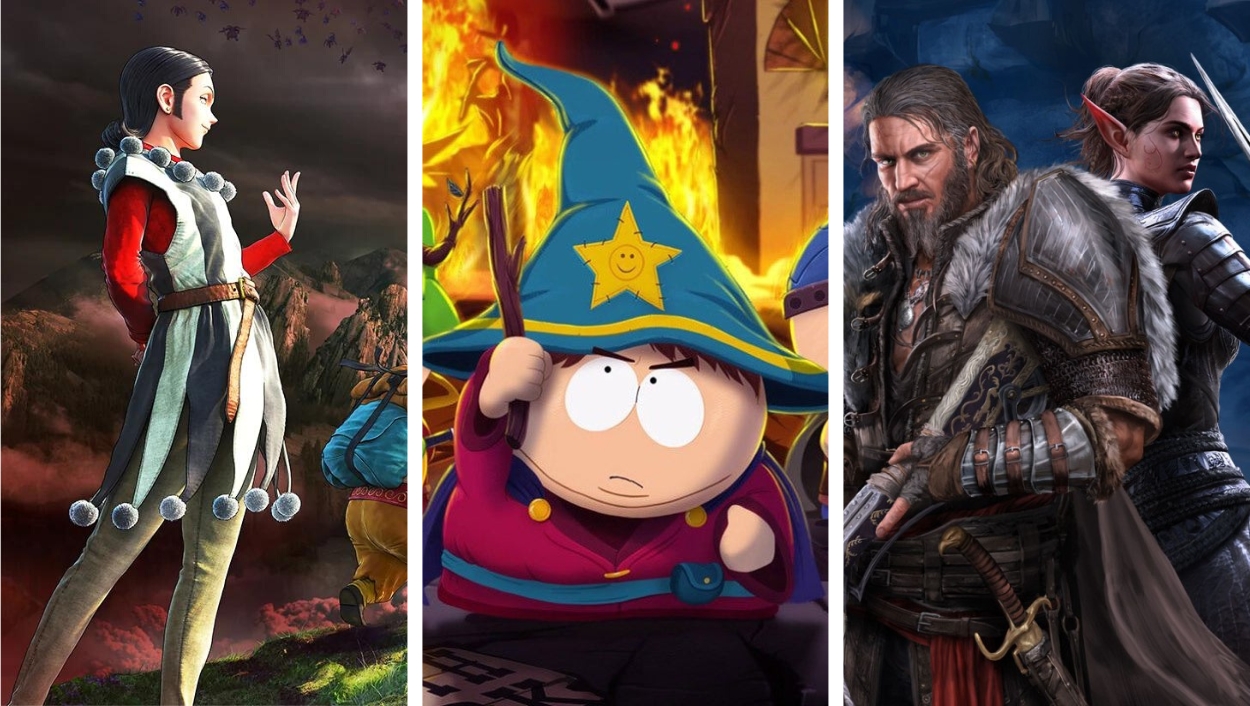
What are the best turn-based RPG games of all time?
Turn-based role-playing games once dominated the Super Nintendo and PlayStation era of video games.
From Final Fantasy to Dragon Quest to the older Phantasy Star games, shops were filled with epic adventures to battle our way through.
In recent years, there has been a decided shift towards action-based role-playing games.
But, if you long for the days of carefully choosing each character’s actions in a respectable, civilized queue, you should take a look at these great games:
The Criteria
We can almost all agree, for the most part, you could fill an entire top 15 best turn-based RPG list entirely with a certain loosely Fantasy related series that doesn’t understand Finality.
With that in mind, we have decided to limit each game series to only one game on this list.
Not only does this prevent certain prolific series from filling every slot, but it also gives a wider array of games and developers some time in the light.
What is a turn-based role-playing game?
In the simplest terms, a turn-based RPG is a game in which a primary method of interacting with the world (usually combat) is turn-based.
I have broken down each game into a few key features that I believe really embody what generally makes a Turn-Based RPG great:
- Story/Writing – Is it well-written and cohesive?
- Character Development – Does the game allow character customization?
- Exploration/Adventure – Is the game linear or does it allow the player to choose their own path?
- Combat – Is it balanced? Is it intuitive? Is it fun?
Now obviously these aspects are going to be highly subjective, so if you disagree with the choices on this list feel free to let us know.
The 15 Best Turn-Based RPG Games
We are always open to new opinions and even games we might not have played yet. Now, let’s get to the list!
15. X-COM: Enemy Unknown
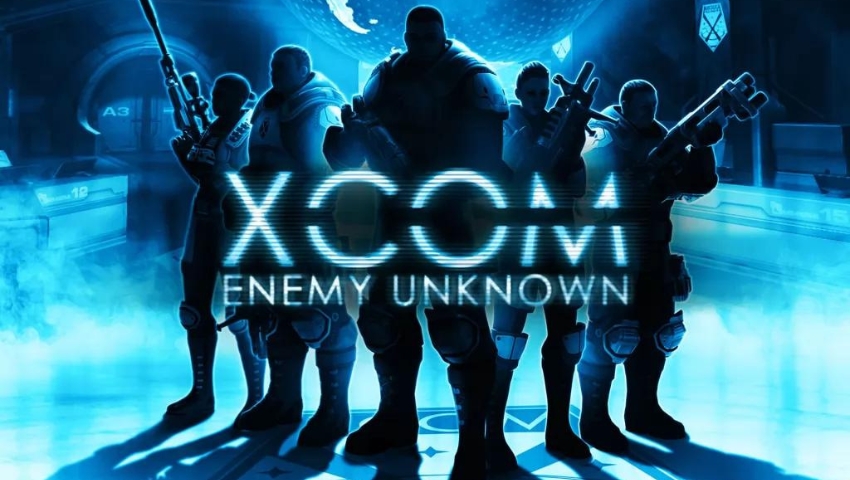
Initial Release Date: October 9, 2012
Platforms: PC, Linux, OS X, iOS, Android, PS3, PS Vita, Xbox 360
Developer: Firaxis Games
Publisher: 2K Games, Feral Interactive
The X-Com Series, spanning over a decade, is a must-have on any turn-based RPG list.
Since its debut in 1994, the X-Com Series has undergone its fair share of growth and evolution. X-Com: Enemy Unknown (2012) shares its name with the original game, UFO: Enemy Unknown.
Set in an alternate, mildly futuristic version of Earth, X-Com: Enemy Unknown presents a world invaded by aliens. As the commander of an elite paramilitary organization, your responsibilities include developing your base, advancing technology, training soldiers, and experiencing the heartache of losing them when they miss a seemingly guaranteed shot and perish during the enemy’s turn. Progressing through the story entails undertaking increasingly challenging and vital missions to safeguard humanity against the alien threat, with the ultimate objective of proudly declaring “independence day” for the world… Wait, that might be a different series altogether.
The X-Com franchise has crafted engaging dialogue and lore throughout its 20+ years of existence. The game features solid voice acting and easily understandable writing, with the only minor criticism being its somewhat generic alien invasion plot.
In X-Com: Enemy Unknown, you command a squad of six soldiers (although having reserves is recommended) across grid-based maps. Each soldier specializes in a specific class: Assault, Heavy, Support, or Sniper. There’s also a chance for characters to possess Psionic abilities, which can significantly alter their playstyle. Characters gain experience and level up, offering a skill tree for choosing abilities. The choices are mutually exclusive, forcing players to make strategic decisions. Additionally, you can purchase better weapons, armor, and support items in a desperate attempt to keep your soldiers alive.
While there is some mission choice available, the game leans towards linearity. Certain operations are crucial and must be completed; failure to do so will result in a game loss. Even within the operational zone, players must navigate a predefined “path” to reach objectives.
Combat in X-Com is simultaneously satisfying and frustrating. Playing on Ironman mode, I found myself meticulously ensuring each character had suitable cover and support from allies, only for things to occasionally go awry. This frustration stems from the game’s percentage-based hit randomization in turn-based battles.
The chance to hit depends on the enemy’s cover, size, defenses, and seemingly mystical programming factors. Your soldiers possess various abilities, but you’ll likely spend much of the time in overwatch, which triggers automatic fire when enemies come into sight. There’s immense satisfaction when an alien is taken down swiftly in a hail of bullets after exposing themselves.
However, it’s considerably less gratifying when all six of your soldiers on overwatch inexplicably miss their shots. Don’t expect miracles from your soldiers; occasionally, they will miss shots with a 99% chance to hit, which can be infuriating.
If you prefer to spare your emotional attachment to named soldiers, it’s best to avoid naming them after people you know, as watching them perish can be disheartening.
14. South Park: The Stick of Truth
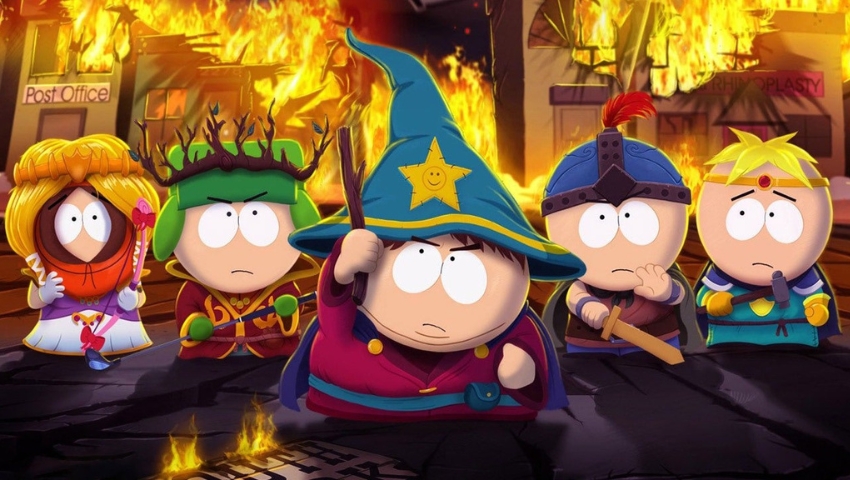
Initial Release Date: March 4, 2014
Platforms: PC, PS3, PS4, Nintendo Switch, Xbox One, Xbox 360
Developer: Obsidian Entertainment
Publisher: Ubisoft
South Park is a show that has spanned 26 seasons and over 300 episodes. It was only natural that the series would make a foray into the world of video games.
Most attempts to bring South Park to gamers were terrible, but in 2014 a company renowned for its ability to create compelling role-playing games took the reins of South Park: A Stick of Truth (ASOT). Obsidian Entertainment brought the crude satirical humor of South Park to gamers in a truly hilarious and compelling way.
ASOT follows the story of “new kid”, an aptly named new arrival to the fictional town of South Park, Colorado. Your character quickly falls in with established and beloved characters from the TV show and begins a quest to recover the Stick of Truth. Throughout the game, the town undergoes alien invasions, government plots, and Nazi Zombies (no I am not kidding). There is also a particularly memorable scene involving the “New Kid’s” parents, which I won’t spoil but is burned deep into my memory forever.
The writing for ASOT is undeniably great. If you enjoy the writing in the South Park show, you will enjoy the writing in this game. Trey Parker and Matt Stone were heavily involved in the development in this game and it shows. This game is very much an interactive episode of South Park.
There are four character classes to choose from at the beginning of the game, the three tropes of “fighter”, “mage”, and “thief”, and one class truly unique to South Park, the Jew. Throughout the game, you will level up by gaining experience through fights and events. You will also buy new equipment for your character, increasing his or her attack and defense. It is not a very in-depth character development system if I am completely honest, but it serves its purpose.
The game offers a pretty significant opportunity to explore the town of South Park, without much hand-holding. While some areas will be locked off until you complete certain objectives, in general, you are encouraged to look around and search. This is especially true because there are a significant amount of collectibles in the game. If you are one of those people who need to find and collect everything, you will have lots of things to gather.
Battles take place in a method very similar to most of the Final Fantasy series. Your characters stand to one side of the screen, the enemies stand to the other and you battle it out across a neutral middle ground. The player has access to normal attacks, ranged attacks, items, special abilities, and all the common tools needed to defeat your enemies (also there is fart power). The New Kid is not alone in his battles, and you can bring along a companion to every fight.
In addition, you can also summon special characters during battle to aid you in dire situations (think summons from Final Fantasy).
While ASOT did not revolutionize turn-based combat by any means, what it did was bring a beloved comedy franchise to the world of Turn-Based Role-playing in a way that was charming, hilarious, and gross… and hilarious.
13. Wizardry 8
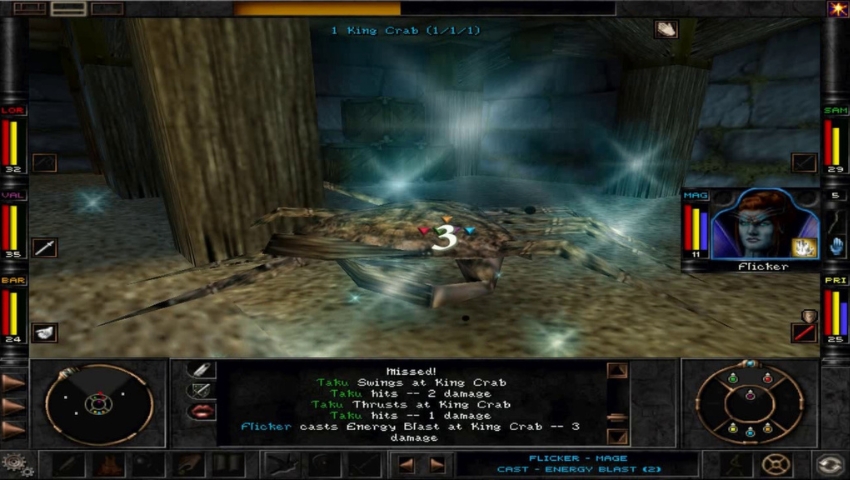
Initial Release Date: November 14, 2001
Platforms: PC, Mac
Developer: Sir-Tech Canada
Publisher: Sir-Tech
The Wizardry series has been a mainstay in the world of role-playing video games since 1981, several years before I was even born. Though I am ashamed to say I have never taken it upon myself to dive into the progenitor Wizardry games, I do remember firing up Wizardry 8 for the first time at the age of 13 and beginning my adventure.
The story of Wizardry 8 follows a somewhat familiar trope of needing to find three artifacts to ascend to godhood. These artifacts are the Astral Dominae (the key to life), the Destinae Dominus (the key to knowledge), and the Chaos Moliri (the key to change).
In order to gather these powerful artifacts, however, you must explore a compelling world of dangerous enemies, bold allies, and enigmatic observers.
It has been some years since I played through this game, but I do not recall there being an overly large amount of voice acting. Most of the information is provided through dialogue boxes and the game is extremely lore heavy. If you are not familiar with the Wizardry universe you might get a little bit lost at times, but never to the extent that you are not able to continue playing the game.
You begin the game by creating a party of six characters and can have two additional NPC characters join you as you advance through the game. Combat is turn-based and there are 15 classes and 11 races you can choose from, each with their unique strengths and weaknesses. This allows you to create a group to suit nearly any play style.
As you murder your way through the world, you will gain experience and level up, gaining access to new abilities and skill points that you can allocate to further customize your party.
Wizardry 8 is a pretty large game and there are lots of things to find. Scattered throughout the landscape you will meet interesting people, get to know them a little bit, and then kill them. I don’t recall there being many gated areas, there are a few that require you to complete some missions or quests in order to gain access, but for the most part, your exploration is only hindered by the relative level of the monsters waiting for you in those new regions.
Wizardry 8 is a turn-based role-playing game in its purest form. Your party acts as one cohesive unit. You will assign actions to all of your characters and then the turn will begin. Each person will act in accordance with their speed and then the enemies will go.
It is a combat system from a more civilized time. You will not require twitchy reactions and you can plan your moves as carefully as you want.
12. Legend of Heroes: Trails in the Sky
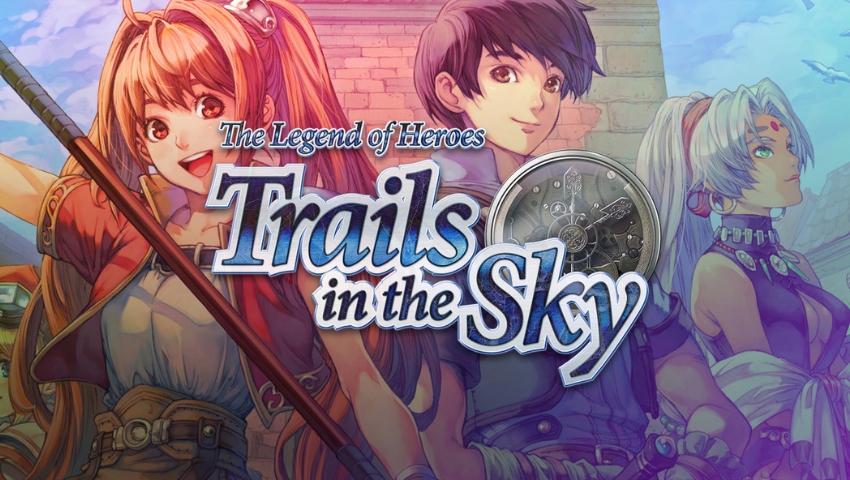
Initial Release Date: June 24, 2004
Platforms: PS Vita, PS3, PSP, PC
Developer: Nihon Calom, MICROVISion Inc.
Publisher: Nihon Falcom, Marvelous USA Inc. Ghostlight
Legend of Heroes: Trails in the Sky is the first Japanese Role-playing Game (JRPG) style game on this list. It is the first Legend of Heroes Game I played, though the series dates back to 1989 with the game Dragon Slayer: The Legend of Heroes.
There are 14 or so Legend of Heroes games split into five subseries, with Trails in the Sky, Trails-Crossbell Arc, and Trails of Cold Steel, being the most recent three series.
The story of Trails in the Sky follows a spunky young girl Estelle Bright and a stoic and broody young boy by the name of Joshua. Desiring adventure you quickly join a cadre known as the Bracers, which your father Cassius is also a member of. Following the Final Fantasy trope, there are special crystals that need to be recovered, a missing father to find, and baddies to thwart.
I have to say the writing in Trails in the Sky is not quite as baffling as some other JRPG games. The English version is well-localized and there were no glaring problems that I noticed. I don’t recall there being a ton of voice acting, and you should expect to read an absolute ton of exposition, lore, and dialogue.
There are a total of seven playable characters in Trails in the Sky, each with their own unique abilities, weapons preferences, and combat styles. As you level up your party, you will gather orbments and quartz which you will use to upgrade your characters, get new skills, and generally improve your party. As with most role-playing games you are also able to buy new weapons, armor, and items for your characters which will increase their statistics accordingly.
Exploration of Liberl Kingdom, the primary setting for Trails in the Sky, takes place in a top-down third-person perspective and instead of random encounters, enemies appear on the world screen for you to attack or avoid at will. You will generally only be able to explore areas that align with the portion of the story you are in, and some areas will become inaccessible after you advance far enough into the game. With this in mind, if you are the kind of person who needs to hunt down every item and monster, make sure you get everything done before moving on with the main quest.
Trails in the Sky is somewhat unique in that combat is slightly more tactical than a traditional JRPG game. Instead of groups of sprites on either side of a screen leaping across to pound each other quickly before retreating back to their own line, Trails in the Sky’s combat takes place on a grid where you can maneuver your characters in order to out-range opponents or close in for devastating attacks.
Combat is fully turn-based with a lovely queue showing you when your characters will act and when the enemy will be coming to give you a what for.
If you are looking for a compelling and light-hearted JRPG to sink 40 – 100 hours into, this might just be the one for you to pick up.
11. Wasteland 2
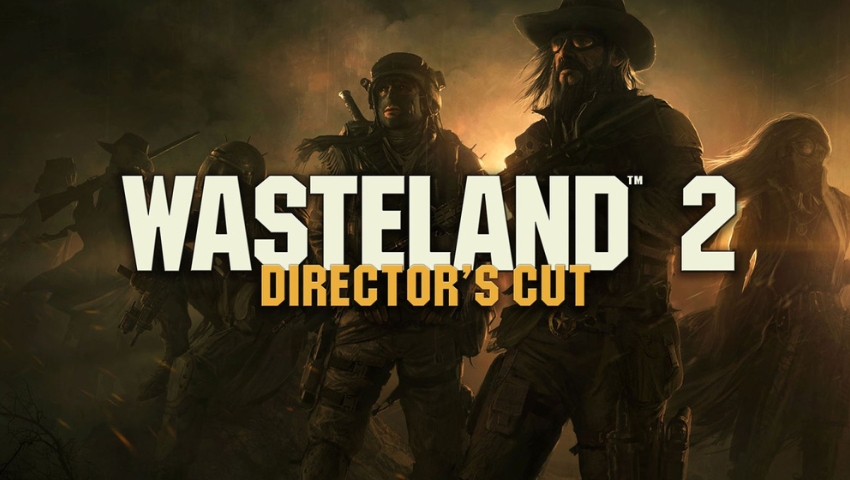
Initial Release Date: September 19, 2014
Platforms: PS4, Nintendo Switch, Xbox One, PC, Linux, Mac OS
Developer: inXile Entertainment, Obsidian Entertainment
Publisher: Deep Silver
Wasteland 2 is a post-apocalyptic turn-based RPG. It was funded through Kickstarter and is a sequel to Wasteland, which was released in 1988. It is one of the first games I Kickstarted and while the initial release had some fairly significant bugs and problems, patches and a Director’s Cut edition released on October 2015, have solved a lot of these concerns.
Wasteland 2 takes place in an alternate history where a global nuclear war has destroyed modern civilization. You take control of a squad of “Desert Rangers” a group dedicated to helping other survivors. You are thrust into a journey of discovery when the body of an experienced ranger is found dead and you take it upon yourself to find out why he was killed and to complete his mission.
The story takes place in two major areas, Arizona, and Los Angeles. Throughout these regions, you will come into contact with nuke-worshipping monks, raiders, nomads, robots, and many other colorful factions.
Ultimately your goal is to save your little part of the shattered world from chaos. Good luck.
The writing in Wasteland 2 was pretty great. There was voice acting for some parts of the game, but not others, and you should expect to read a lot of dialogue boxes if you intend to learn the lore of the world. During the initial release, there were some bugs where some conversation options didn’t appear properly in certain conversations, but it seems that those have been ironed out. The world itself is quite detailed and you should really focus on the details if you want to get the most of the experience.
Wasteland 2 allows you to create four squad members initially and up to three NPC characters will join your group as you continue your journey. Each character can be customized to your specifications with stat points being allocated into C.L.A.S.S.I.C statistics (Coordination, Luck, Awareness, Strength, Speed, Intelligence, Charisma). Each of these statistics benefits your character in some way, and you can choose to specialize in a few or generalize your character.
Further customization occurs in the way of skills. There are three types of skills in the game, Combat, Knowledge, and General, and these will affect what weapons you will focus on, how your characters will approach challenges and puzzles, and how they will interact with the game world in general.
The wastes of Arizona are fraught with peril, and one should take care while exploring. While you are given the opportunity to journey around at will, you should be aware that some areas will initially be blocked off by radiation clouds, which have no qualms about eliminating your group entirely. In addition, there are random encounters that can take place, which include murderous robots, bandits, raiders, hidden caches, and ruins to explore. Exploration is very much encouraged and you should be prepared to scour every inch of territory to get the most from the game.
Combat in Wasteland 2 takes place from a tactical perspective with a visible turn order. Combat is grid-based and your characters can attack from range, hide in cover, close to melee, throw grenades and even destroy some of the terrain in order to gain an edge over their enemies. Each character has a set number of action points based on their strength, intelligence, and speed, and this dictates how many things they can do during combat.
If you see a turret pointing at you, run.
10. Darkest Dungeon
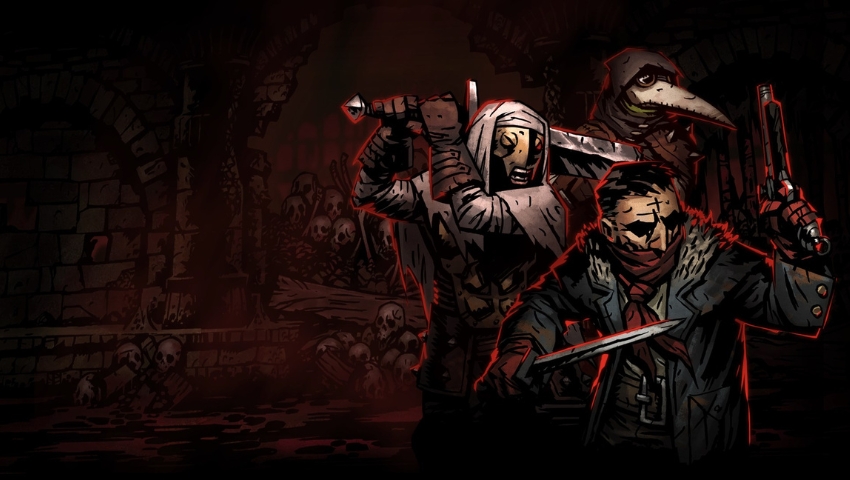
Initial Release Date: January 19, 2016
Platforms: Nintendo Switch, PS4, PC, iOS, PlayStation Vita, Xbox One, Linux, Mac OS
Developer: Red Hook Studios
Publisher: Merge Games
Darkest Dungeon is a game that does not hold your hand as you delve into hellish landscapes. It is a game that does not hide the fact that adventurers facing horrific nightmares all the time will invariably be driven to madness. There have been several pieces of DLC released, with most being new character classes. The Crimson Court is one of two significant content DLC, and has both a positive and negative impact on the game in terms of balance, while The Colour of Madness was generally well-received.
Darkest Dungeon begins when you receive word that you have inherited an estate from a relative. Unfortunately, this estate was built on a giant pit of evil. From portals to dark dimensions, evil creatures have poured out into the world and it is now your job to cleanse your lands of these horrific beings. The story is told in pieces as you descend through several different dungeons before reaching the game’s namesake, the “Darkest Dungeon”. It is here you come face to face with your destiny. Best of luck.
The writing in Darkest Dungeon is sufficiently grim and moody, suiting its atmosphere well. The lore is intriguing, but not overbearing, and you will not be spending hours and hours reading a novel throughout the game. The voice acting is well done, though some of the lines used by characters in battle can become repetitive.
There are 15 classes available in the game, with two additional heroes available through DLC purchases. Each class has its own weapon and armor, which can be upgraded at the blacksmith, and each has its own skill set that they bring to aid their party during their harrowing journey. Heroes can level up through “Resolve Levels” and these allow the hero to improve their abilities and equipment further, making high Resolve heroes a valuable asset to protect.
Each “Dungeon” is split up into several rooms which you will need to explore to complete the mission. Each room can contain enemies, traps, treasure, shrines, or even nothing. Through interactions with these events, you can gain experience, buffs, debuffs, or even straight-up death. Some dungeons are linear, while others allow a little more choice in regards to the path, but you will not be traipsing across a picturesque landscape searching for collectibles.
Combat is where Darkest Dungeon shines. It is visceral, challenging, and frustrating at times. Your heroes are set on one side of the screen, while the enemies are set on the other. You will be walking a single file in a formation with your right-most character at the front line. Certain abilities can only be used from certain positions in the formation so be sure you have your people set up in the right places.
Enemies or sometimes even your own skills can cause your party order to change, so you have to be pretty careful about what you are doing and a long-term strategy for each fight will almost always be more successful than gut reactions. In addition to physical damage and scarring, your characters can also suffer from mental scarring which can make them hesitate, change formation, or even attack your own heroes. No one ever said clearing the land of evil was easy.
He who fights with monsters should look to it so that he himself does not become a monster. And if you gaze long into an abyss, the abyss also gazes into you.
9. Grandia
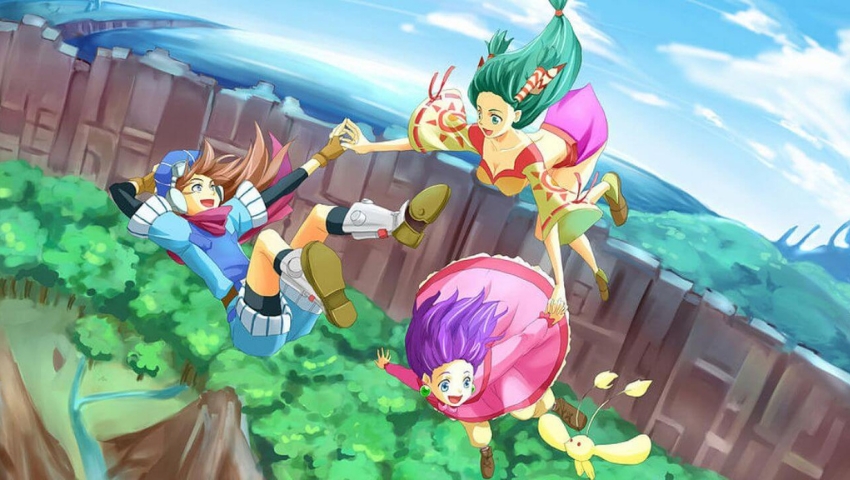
Initial Release Date: December 18, 1997
Platforms: Nintendo Switch, PS, PC, Sega Saturn
Developer: Game Arts
Publisher: ESP Software, SCEA, Gungho Online, Ubisoft `
Grandia is the first game in a series spanning 6 games. Released in 1997 in Japan, it was released in North America on October 26, 1999. It is a true-to-form JRPG, in which you play a young adventurer prospect who is drawn into an adventure with the fate of the world at stake.
You play as Justin, an aspiring adventurer whose father vanished and whose mom doesn’t want to lose her son. You join up with your friend Sue to investigate a dig site under the laughably inept oversight of the Garlyle Forces and steal a strange device that you have to bring across the world. You flat-out abandon your worried mother, probably leading her to have an emotional breakdown thinking that her entire family has been lost. Good job you jerk… anyway you hop on a boat to another part of the world, meet up with some other allies, fight some baddies, and save the world. It’s a JRPG, so don’t expect it to deviate too much from the ‘hero overcomes all odds’ trope.
Like most games on this list, expect to read a lot. Some of the lore is shown through in-game scenes, but expect to read dialogue boxes a lot. There isn’t much in the way of twists or surprises, but the villains are villainy, the heroes are righteous, and there are some solid comedic scenes.
There are two forms of experience in Grandia. The first form is general experience, which will increase your level, but the more important experience is skill experience. Skill experience is gained by using weapons or spells. As you get more experienced using a specific weapon or element type, you will unlock new abilities and moves. In all honesty, I would recommend you take a quick glance at a skill guide before committing to a certain weapon or magic path. It should be noted that leveling up skills will also increase your statistics, such as strength.
Grandia is a pretty heavily story-driven game. While there is a limited ability to explore areas, you will be spending far more time moving from one story hub to the next. It is not by any means an open world and upon leaving some areas, you will find you cannot go back. Monsters are visible on the world screen and battles begin when your sprite touches the enemy.
The combat in Grandia is third-person turn-based, but you can interrupt enemy attacks by landing a strike during the period of time when they are charging up their attack. This does not always work, but it’s best to try to interrupt enemies whenever you can.
Puff Puff!
8. Dragon Quest 11
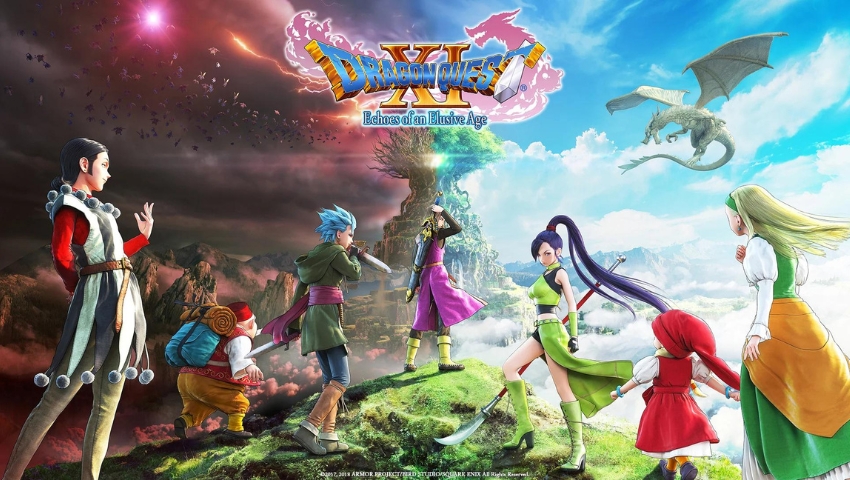
Initial Release Date: July 29, 2017
Platforms: Nintendo 3DS, PS4, PC, Nintendo Switch
Developer: Square Enix
Publisher: Square Enix
Dragon Quest 11 is the latest in a long line of Dragon Quest games that dates back to 1986. The first Dragon Quest game I ever played was on the NES and my brother saved over my game. I was very displeased. The series has come a long way since then, and I firmly believe Dragon Quest 11 is one of the best in the series.
As with most Dragon Quest games, you are “Stoic Hero” and your job is to save the land. The premise of the game never really deviates from this, nor are you ever led to believe you are not the hero. The game pounds you in the face constantly about how it’s up to you to save the world and that you are the only one who can, so grab your weapon and go give those evil baddies a good what for.
The writing in Dragon Quest 11 is solid. All of the main cutscenes and some of the normal conversation is voice acted. You will have to do a bit of reading in order to get the most out of the game. What is especially nice is that the game offers a brief summary of what has been going on in the game when you load. So if you put it down for a week or three you can come back, figure out what was going on, and get right back into it. I think more games should have this feature.
Your character is the Luminary, basically an Eldritch Knight. You are equal parts blade-wielding badass, and magic spewing wizard. As you level up you will be able to put points into what is effectively a hex-based talent tree, allowing you to become better at certain aspects of fighting. The Luminary can upgrade two-handed fighting, sword-and-board fighting, and magical abilities. But you are not the only character with a talent tree, and each of the game’s 6 NPCs that can accompany you has their own skill sets and equipment preferences. As with most JRPGs, you will be upgrading your armor and weapons in every new town, so make sure you go grind a bunch of monsters.
Dragon Quest 11 hosts a relatively open world, with some areas gated by quest or level requirements. There are quite a few secret items and places to find, and exploration is encouraged. You are prevented from returning to some areas at parts of the game, so it is generally advised you do some heavy exploring before completing main quest objectives.
While you have the ability to move around the battlefield freely with your character, it offers absolutely no benefit. Combat effectively follows the same pattern as other Dragon Quest and most Final Fantasy games. Your units line up on one side of the fight, while the enemy lines up on the other, and you proceed to beat each other to death with weapons and magic until one side emerges victorious. I will suggest that, if you are familiar with these combat systems, you play on hard mode. Dragon Quest 11 does seem to lean a little on the easy side if you play on normal.
Puff Puff!
7. Fallout 2
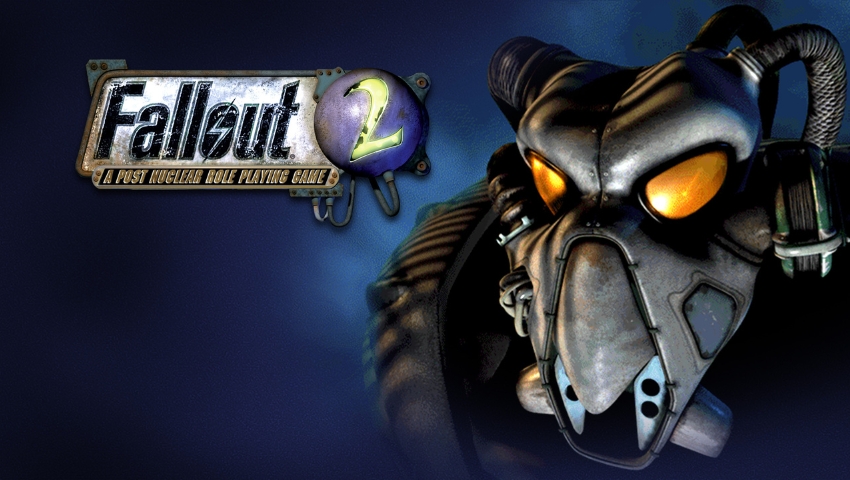
Initial Release Date: September 30, 1998
Platforms: PC, Mac OS
Developer: Black Isle Studios
Publisher: Interplay Productions
If the developer of Fallout 2 looks familiar, that is probably because you played Baldur’s Gate, Baldur’s Gate 2, Icewind Dale, Icewind Dale 2, or Planescape: Torment. Fallout 2 was released in 1998 and was designed by Chris Avellone and Matthew Norton. It is widely considered to be one of the best role-playing games of all time.
The story of Fallout 2 takes place approximately 80 years after the events of Fallout. The hero (you) is the direct descendant of the Vault Dweller from Fallout and it is your job to retrieve a Garden of Eden Creation Kit (GECK) which can effectively terraform the blasted wasteland into a thriving ecosystem. Along the way, you will encounter enemies ranging from laughable Rad Roaches to the terrifying Deathclaw and Super Mutants. But you will also meet some friendly people who will give you tasks, rewards, items, and their heartfelt thanks. Sally forth brave hero.
The writing for Fallout 2 is superb, but don’t expect much voice acting. You will be effectively reading a novel as you play through the game, and you will need to pay attention in order to get the information you are looking for. If you feel that “books are for nerds” and don’t like your gaming eyes to be corrupted by the written word of man, this is not going to be the game for you.
The character development of Fallout 2 is pretty much the same as other Fallout games that you might be familiar with. There are 7 statistics known as S.P.E.C.I.A.L (Strength, Perception, Endurance, Charisma, Intelligence, Agility, Luck), and you will allocate points into each in order to give your character bonuses. There are also 18 skills you will be able to put points into, and you will not be able to maximize all of them, so choose wisely. Finally, there are also perks which are not unlike “feats” from Dungeons and Dragons, which you will be able to choose every few levels, and these will provide further bonuses to your character. There are also several companions who can join your party, and (if I remember correctly) you can only bring half your charisma value in party members. So Charisma can be pretty important if you want to drag along some friends.
Feel free to poke around the Fallout 2 world pretty much at your leisure. Just be sure to save a lot because bad things can be waiting around every corner and it is not enough to rely on hopes and dreams to survive. Some areas will be gated by quests or skill checks, but otherwise, you are free to wander around to your heart’s content.
Combat in Fallout 2 is turn-based, with each character having a certain number of action points available to them. You will spend your action points moving, attacking, using items, etc. Your companions are not directly controlled by you, but you can set their behavior and tactics in order to ensure they will generally do what you want them to.
In Fallout, like real life, do not skimp on Intelligence. Trust me
6. Might and Magic 7

Initial Release Date: June 8, 1999
Platforms: PC
Developer: New World Computing
Publisher: 3DO
The Might and Magic series dates back to 1986 and was originally a grid-based adventure game.
Might and Magic 6, 7, 8, and 9, brought about fluid movement and exploration before Might and Magic 10 brought the series right back to its grid-based roots.
Might and Magic 7 barely etches out Might and Magic 6 as my favorite game in the Might and Magic series, but both are amazing games worthy of playing.
Might and Magic 7 follows the story of “your party” a group of four brave adventurers who attend an island contest, with the prize being a lordship and your very own manor. No one tells you, of course, that your manor is full of monsters, and your lands are beset by a goblin invasion, but those are just semantics. As you work to secure your home, you quickly realize that all is not well in the world of Enroth, with Elves and Humans at each other’s throats, and your tiny little dale right in the middle of it all. Things become even more complicated when you have to befriend either angels or demons, which of course causes the other side to hate you as well. Choose wisely, my lords and ladies.
There are a handful of cut scenes in the game with voice acting but do not expect most information to be provided to you through sound. You will be reading a lot of text. Most of the information you will be given is exposition and lore, but if you enjoy a well-developed world rich in history and intrigue, the writing will be up to your standards.
You control a group of four heroes pulled from four different races and nine classes. Each race has different starting attributes and you can modify their statistics using a point-buy system during character creation. Unlike Might and Magic 6, where you could master any ability so long as your class could learn it, Might and Magic 7 introduced specialized skill masteries for each class. Of the 34 or so skills in the game, each class can only achieve grandmaster status in a few, making it important to diversify your party if you want to have access to higher-tier spells and masteries.
Characters gain experience through battles and quests, but unlike other role-playing games on this list, simply reaching the experience requirement for your next level does not mean you level up. Instead, you have to go find yourself a training center and pay some gold in order to unlock your desperately needed skill points.
The world of Might and Magic 7 is almost completely open to you from the moment you step off the Emerald Isles (where you begin the game). The only thing preventing you from having free reign to look in every nook and cranny is the legions of monsters waiting to eat your face. There are ways to bypass some of these enemies and go exploring in places that are above your might (or magic), but in general, you are going to want to stick to level-appropriate areas until you get stronger.
When I added this game to the list, I was aware of the somewhat controversial detail that this is not entirely a turn-based combat game. Easy with the pitchforks and torches. Might and Magic 7, like its predecessor Might and Magic 6 is a hybrid game. You can perform combat in real-time, which is something that becomes more frequent once you unlock a certain class of weapons in the late-game, but for most of the game, you will be fighting in Turn-Based mode.
As your camera mode is locked in first person, and your party is just a floating camera, you will need to be mindful of enemies surrounding you while you hurl arrows, and spells, and hack away at your foes.
Your group moves as one entity but each character will act independently depending on their speed and initiative.
Ancient Weapons are far too powerful.
5. Shadowrun: Dragonfall
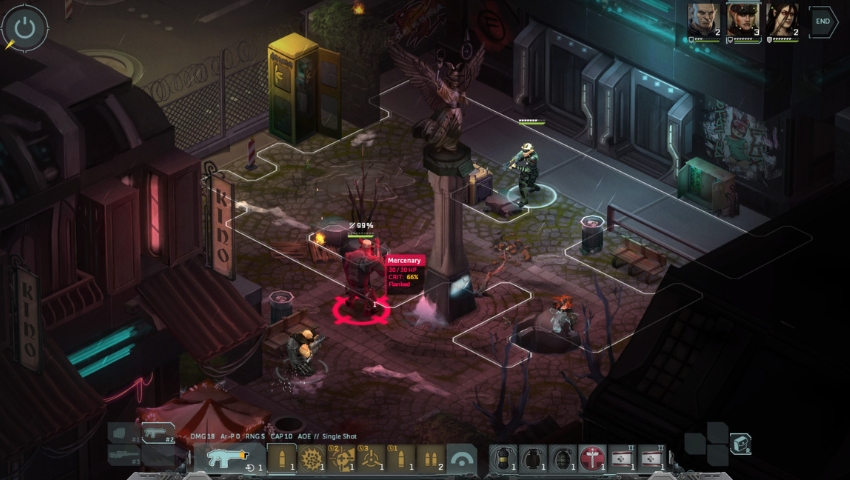
Initial Release Date: February 27, 2014
Platforms: PC, OS X, Linux, iOS, Android
Developer: Harebrained Schemes
Publisher: : Harebrained Schemes
The Shadowrun series is derived from a pen-and-paper role-playing game of the same name.
In this dystopian future, the world has become a corporatocracy, and also fey races, magic, and dragons have returned to Earth.
The first Shadowrun game was released in 1993 on the Super Nintendo with other adaptations of the game being released on Sega Genesis, Mega-CD, and Xbox 360.
In 2013 Shadowrun: Returns was released and Shadowrun: Dragonfall came out a year later.
Shadowrun: Dragonfall follows the tale of a Shadowrunner who travels to Berlin to join up with a team in order to raid a data vault inside a mansion. The mission goes wrong and your leader dies. Under heavy attack by security forces your team is forced to flee. You find out that you were set up, and your teammates elect you to be their new leader. As you journey through the very bleak world, you will begin to uncover pieces of a story rich with intrigue, betrayal, and twists. Also, you get to meet a Dragon. So that is pretty cool.
The writing in Dragonfall is superb. The world is rich in lore, atmosphere, and detail. A lot of the dialogue is handled by voice acting, but you will have to read some text in order to get the most of the game. I truly hope more Shadowrun games are created by the same writer because Dragonfall took what Shadowrun: Returns was, and made it even better.
Shadowrun is a game where you only create one primary character, which you control throughout the game. There are six classes to choose from and five races. In an interesting twist, your choice of Race is actually more important than your choice of class. Certain races have restrictions or bonuses to how much they can advance certain skills or traits. Classes are known as archetypes in this game, or you can simply build your own character, putting your Karma points into whatever you want. Speaking of Karma points, these are what you will accumulate throughout the game to spend on increasing your abilities.
There are 6 statistics in the game (Strength, quickness, body, intelligence, charisma, willpower) and, with the exception of body, each has skills associated with them. You are able (and required) to spend Karma on both primary statistics and skills in order to make your character more powerful.
Shadowrun: Dragonfall is a fairly linear game. While you are able to explore the zones you visit, this game is not open-world by any means. There are a fair number of side quests, hidden caches, or lore-related interactions to find while journeying around, so I would recommend giving each area at least a cursory lookover. Most areas will become inaccessible once you finish your mission in them, so do not expect to be able to return after you complete an area.
The combat in Dragonfall is identical to that of Shadowrun: Returns. You control a squad of weapon-toting mercenaries on a grid. Each character has a certain number of action points assigned to them which you can spend to move, attack, use magic, use items, or hack. Combat often takes place over two distinct areas: The real world is where most of your characters will be involved in combat, dishing out and avoiding a hail of gunfire in equal measure.
The matrix is where your Decker will spend some of his fights, battling his way through a semi-physical construct of a network, battling defense AI and trying to open doors, wrestle control of turrets, or obtain information or credits.
Bring a Decker every time. You will regret it if you don’t.
4. Final Fantasy 9
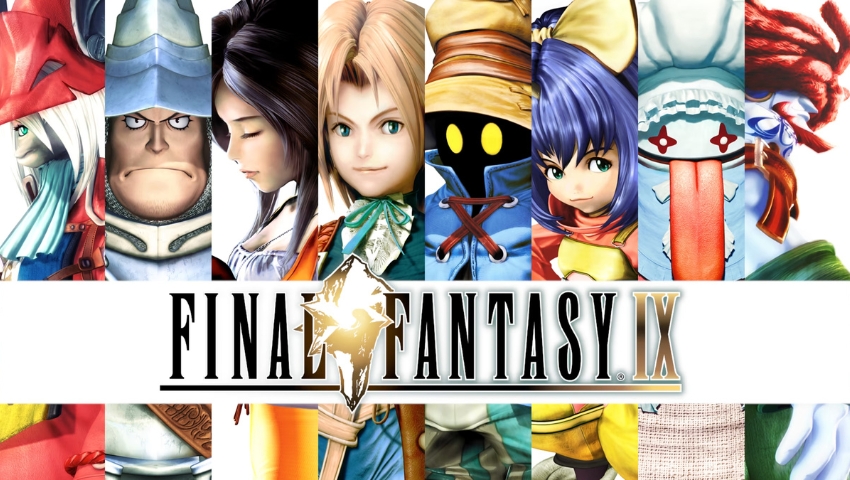
Initial Release Date: July 7, 2000
Platforms: PS4, Android, PS, Nintendo Switch, iOS, PC, Xbox One
Developer: Square Enix
Publisher: Square Electronic Arts
As I mentioned at the beginning of this list. Final Fantasy could fill nearly every slot on this list if given free rein.
This series began in 1987 with the release of Final Fantasy on the NES and has expanded to encompass over 30 games. It was a very difficult task to pick one Final Fantasy to place above them all, but I had to go with my heart, and Final Fantasy 9 was my choice (though Final Fantasy 4,5,6,7, and 10 were all close second).
The story of Final Fantasy 9 begins with you taking control of a young boy with a huge head and a tail and finding out that your mission is to kidnap royalty. The plan seems solid, what could possibly go wrong? Everything. Everything goes wrong. You find yourself embroiled in a desperate battle to save the world from a strange lady man with truly breathtaking hips and a clown-queen desperate to conquer her neighbors. All of this culminates with a battle against one of the most ill-defined bosses ever. Not even kidding, you beat what you think is the boss, only to run into another boss that was never once mentioned in the game at any time.
There is no voice acting in Final Fantasy 9, so get used to reading. All of the lore and information is given to you through beautifully rendered, but voiceless, cut-scenes, and dialogue boxes. The story is solid, if a little convoluted, as with all Final Fantasy games. Zidane and his companions have compelling reasons to journey forth and battle evil, and the game has a beautiful musical score.
There are 8 primary playable characters in Final Fantasy 9, each of which aligns with a traditional Final Fantasy Class. For example, Zidane is a Thief, Garnet is a White Mage, Vivi is a Black Mage, and so on. Each character has a specific weapon assigned to them, with the exception of Garnet, Vivi, and Eiko, who share some of their weapons.
In addition, each character has a class of armor they can wear, either light, medium or heavy, and accessories they can equip. You might be wondering why it was important to explain all of that. It is because each of these weapons, armor, and accessories has abilities tied to it.
By equipping those items you are able to use some or all of the abilities that the piece of equipment possesses. As you kill enemies you will gain AP which will eventually allow you to learn or master the ability and you can then remove the item and still retain the skill. Alongside this item-based skill system, you will also gain normal experience which will increase your character’s statistics.
Final Fantasy 9 offers two distinct ways of exploring its world. The first you will encounter is field screens, which are effectively pre-rendered backgrounds that your character can navigate, not unlike Final Fantasy 7. The second is the 3d world map, which you interact with in a top-down perspective with a maneuverable camera. The field screens are commonly used in towns, dungeons, and events, while the world screen is used in order to get you to those places. There is a huge amount of exploration possible in Final Fantasy 9, including a treasure-hunting mini-game known as Chocobo Hot and Cold.
The combat system of Final Fantasy 9 is turn-based. You can take your time choosing your actions in order to maximize your chance of winning each fight. Two of the characters can use summoning magic, known as Eidolons in this game, while others will have no magic, but much higher physical attacks. There is a system known as trance in the game, which is similar to the Limit Break from Final Fantasy 7. After taking sufficient damage, or occasionally through game triggers your character will begin to glow and gain access to special commands.
Steal… steal everything.
3. Earthbound (Mother 2)
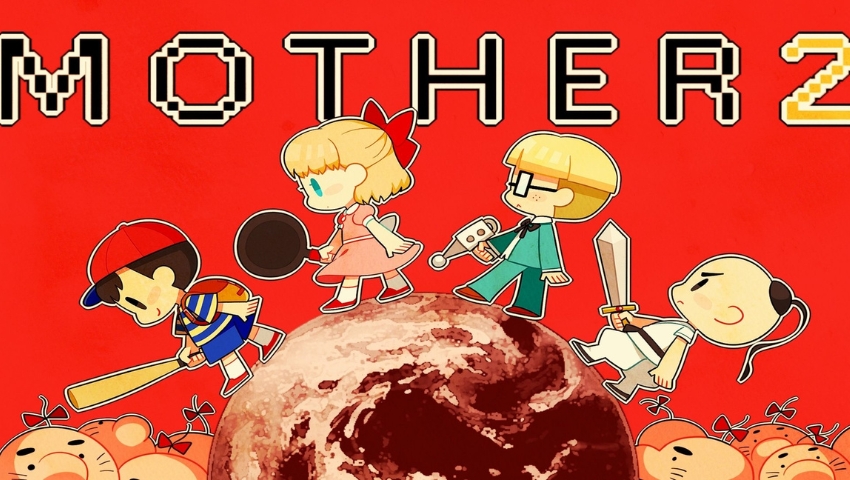
Initial Release Date: June 05, 1995
Platforms: SNES, Game Boy Advance
Developer: Ape, HAL Laboratory
Publisher: Nintendo
Though EarthBound was originally released on August 27, 1994, it did not make its way to North America until almost a year later. It is the second game in the Mother trilogy and is one of my favorite games of all time.
EarthBound follows the story of a young boy named Ness (or whatever you want to name him). You investigate the site of a meteor crash with your neighbor Pokey and find that an alien, Giygas, is making everyone, and everything malicious and aggressive. You are told by a small insect how to stop Giygas, but despite its tremendous might, the insect is killed by a well-placed strike from Pokey’s mother, and you are sent off on an epic journey through several towns and even the inner workings of your own mind.
EarthBound is witty, amusing, and does not take itself too seriously. You will encounter enemies which are literally animated items with angry faces. There is no voice acting, so you should expect to read all of the lore and information, but being as it is a SNES game, it will not be novel-length. It is a goofy game, and you should anticipate a well-told and compelling story, with some good humor.
Leveling in EarthBound is linear. After the battle, you will get a certain amount of experience. Once you reach the experience value needed for the next level you will automatically level up, gain some statistic increases, and unlock any skills that were set for that level. There are no choices to be made while leveling up and the only real development you can decide for your character is if you want to grind enemies for extra experience or not.
The world of EarthBound (also known as Eagleland) is fairly linear. You will travel from your hometown of Onett to Twoson to Threed, and so on. Not every village or area is a variation of a number, however, but you will have the opportunity to explore each in detail before moving on to the next one. For most of the game, you are able to travel back to previously explored areas, but I would advise fully exploring each before moving on to the next.
The combat system in EarthBound is a relatively basic Turn-Based system. You queue up your actions and then everything activates based on an invisible turn order. As this is an older game there is not a lot of animation shown during the fights. Combat is relatively quick, and when your characters become overpowering compared to the enemies you are fighting, fights with weaker enemies are won automatically.
Name your favorite thing something funny.
2. Chrono Trigger
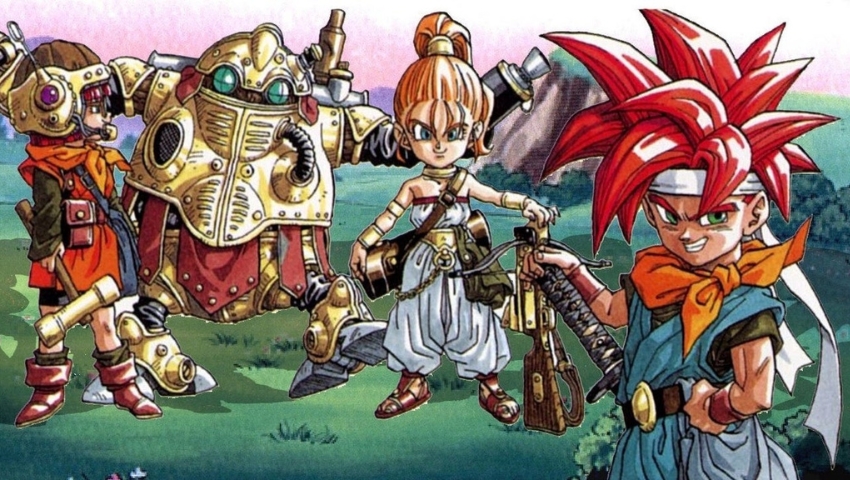
Initial Release Date: March 11, 1995
Platforms: SNES, PS, Nintendo DS, i-mode, iOS, Android, PC, Apple TV
Developer: Square
Publisher: Square Enix, Enix
Now we are coming down to the wire, with Chrono Trigger in the second spot. This game has made so many top-ten lists that it should not have come as a surprise to anyone. Chrono Trigger is an iconic role-playing game that is one of the best games ever made.
In Chrono Trigger, you follow the story of Chrono, a young silent protagonist, whose mom lets him attend a fair with a wooden sword. If you are like me you will then beat up a robot for a bit to get a real sword, and then you are thrown into an adventure through time. Your first mission is to save a princess that you needlessly endangered through the use of your friend’s teleporter, and from there you have to stop a world-ending apocalypse. Better get on it.
The writing in Chrono Trigger is the pinnacle of the Super Nintendo Era of Role-playing Games. There are several twists that can catch you by surprise, and even a touching moment when tragedy strikes your party. There is no voice acting in this game, like most older games, so expect to read a fair amount while you are playing. It is worth every second.
As with most Super Nintendo JRPGs, character development is linear. Your characters are given their roles and they will unlock their special abilities as they level up. One interesting thing about Chrono Triggers is that, depending on the combination of characters in your party, you will get access to Double or Triple techs, which combine the abilities of two characters to a more powerful effect. Again I would advise looking these up so that you can try them. There are a lot of combinations in the game.
Most of the game will take place in field screens, where you will explore dungeons, cities, and forests. Field screens are also where you will encounter enemies, who are, aside from ambushes, visible on the screen so that you can try to avoid or bypass them without fighting. The remainder of the game will take place on the world screen where you will basically be traveling from one city, dungeon, or area of interest to the next.
The combat in Chrono Trigger is turn-based. You will have an attack bar that will fill up slowly, and when it finishes you will be able to perform an action, or sometimes just wait for other characters to become ready in order to use double or triple techs. While your characters will move around the battle screen, this is simply aesthetic and has no impact on the fight at all.
Magus did nothing wrong.
1. Divinity: Original Sin 2
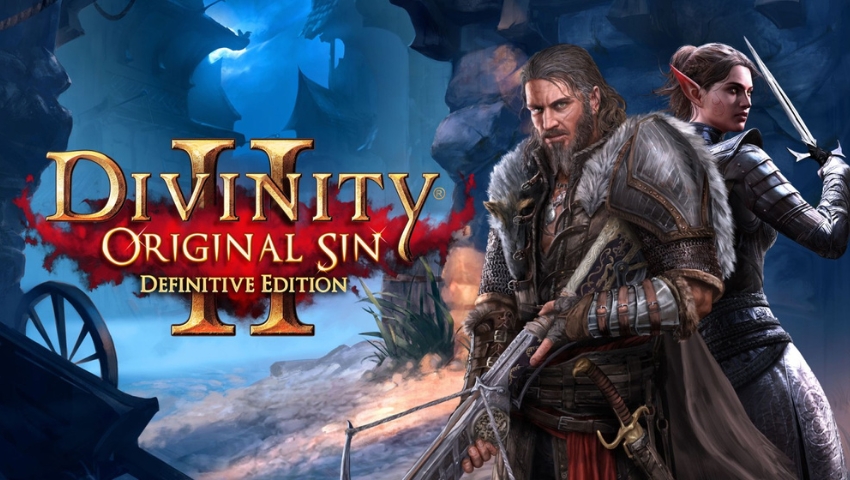
Initial Release Date: September 14, 2017
Platforms: PS4, Xbox One, PC
Developer: Larian Studios
Publisher: Bandai Namco Entertainment
Finally, we have reached the end of our list.
Divinity: Original Sin 2 is quite possibly the best game I have ever played, let alone a turn-based RPG. Though there were some pretty brutal bugs and problems during the initial release, everything has been patched, and a definitive edition was released, adding a pretty significant amount of content and expanding the world.
The story begins on a boat headed towards Fort Joy, an island prison for individuals who can use “Source”.
Your boat is attacked when a powerful Sorcerer breaks free of her bonds and starts wrecking things.
Saved by your god, or sometimes a demon, you wash up on shore, and from there your journey begins in full.
The writing in Divinity: Original Sin 2 is so dense it could fill several books. While there is a very significant amount of voice acting, there is simply too much lore and conversation to be fully voice-acted.
You get to control everything about the development of your character.
It is important to choose your skills and statistics wisely for the first portion of the game, but once you leave Fort Joy you have a nearly unlimited ability to adjust your skill and stat points.
There are 6 stats (Strength, Finesse, Intelligence, Constitution, Memory, and Wits), 17 Combat Abilities, 7 Civil Abilities, and over 40 talents to choose from.
Divinity Original Sin 2 is a game where you can explore somewhat freely, but it is also a game where level scaling is a bit of a problem. You will generally want to stay in areas close to, or just below your current level. The reason for this is scaling is not linear. In later levels especially you might find that an enemy only one level above you has significantly more physical and magical armor than you do.
Despite this, you should absolutely search every nook and cranny of this world. There are so many hidden items, quests, and events that it is nearly impossible to get them all in one playthrough.
Combat in DOS:2 is visceral, complicated, and highly strategic. The Combat is entirely turn-based with a turn order at the top of the screen informing you when your characters will be able to act, and when the enemies will take their turn. Turn order is based on initiative.
Characters and enemies have two forms of defense, physical and magical armor, that must be bypassed before hit points will be lost.
Hail to the Source King.
Summary
This brings our list of some of the best turn-based RPGs of all time to an end.
Here’s a quick recap of the 15 best turn-based RPG games of all time:
- Divinity: Original Sin 2
- Chrono Trigger
- Earthbound (Mother 2)
- Final Fantasy 9
- Shadowrun: Dragonfall
- Might & Magic 7
- Fallout 2
- Dragon Quest 11
- Grandia
- Darkest Dungeon
- Wasteland 2
- Legend of Heroes: Trails in the Sky
- Wizardry 8
- South Park: The Stick of Truth
- X-COM: Enemy Unknown
If you enjoyed this list, you might want to check out the following RPG lists:
- The 16 Best Sci-Fi RPG Games of All Time
- The 18 Best RPG Nintendo Switch Games
- The 28 Best Fantasy RPG Games of All Time
- The 25 Best RPG PS4 Games






